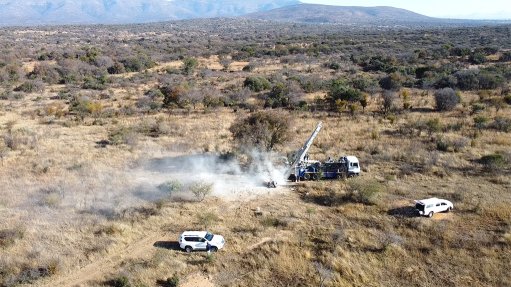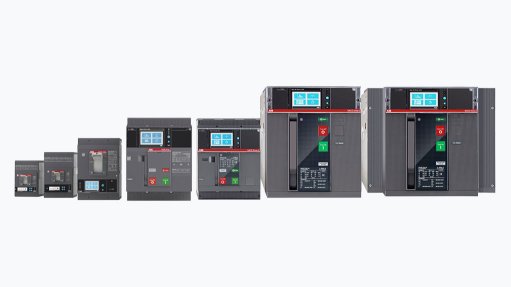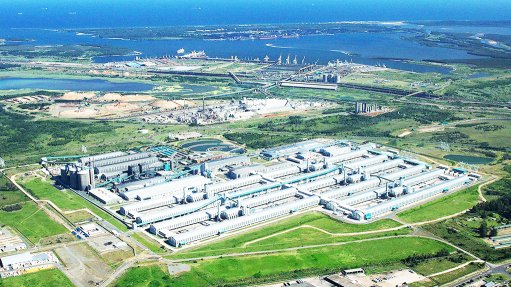There's nothing easier than switching from grey hydrogen to green hydrogen – Lhyfe

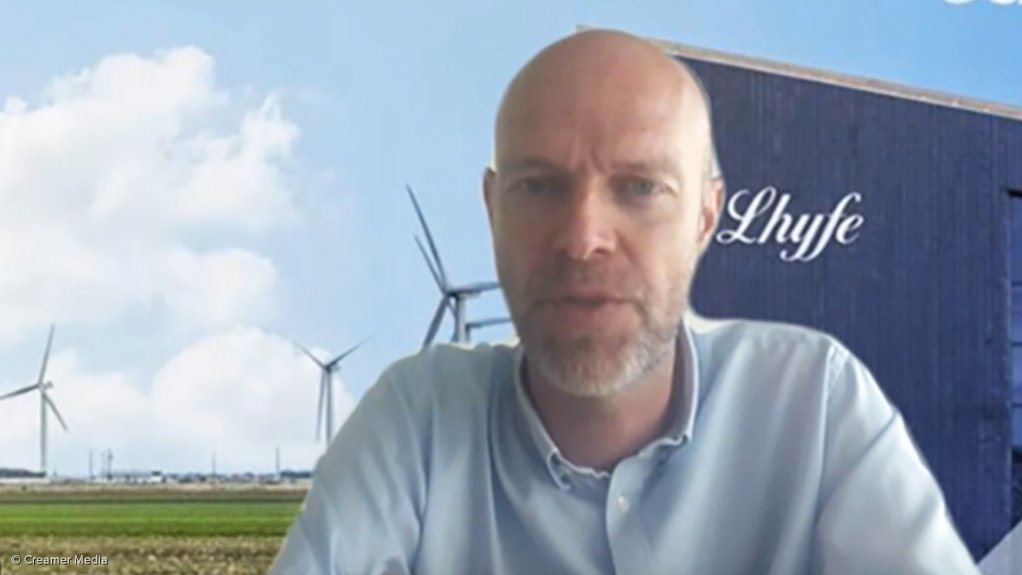
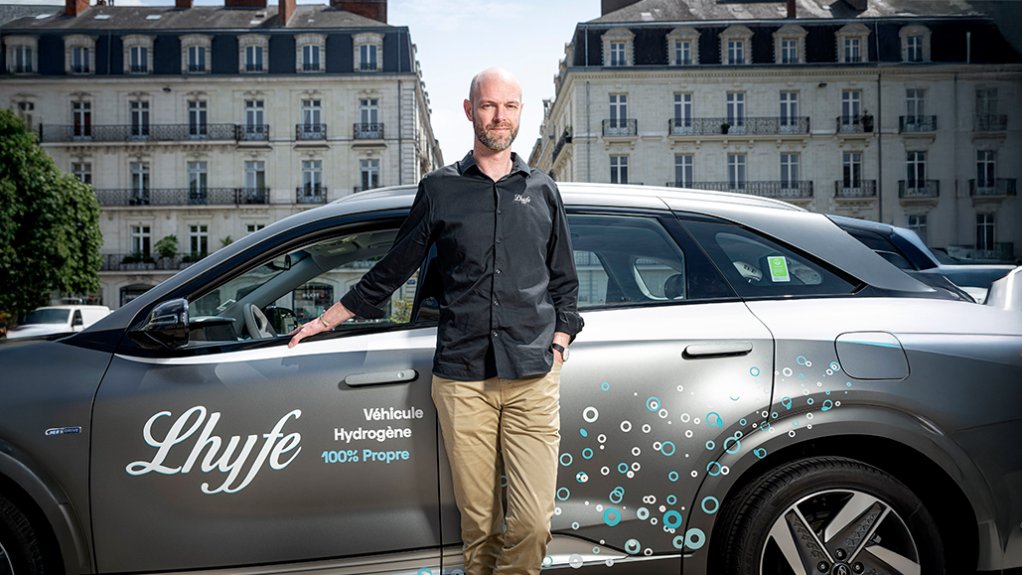
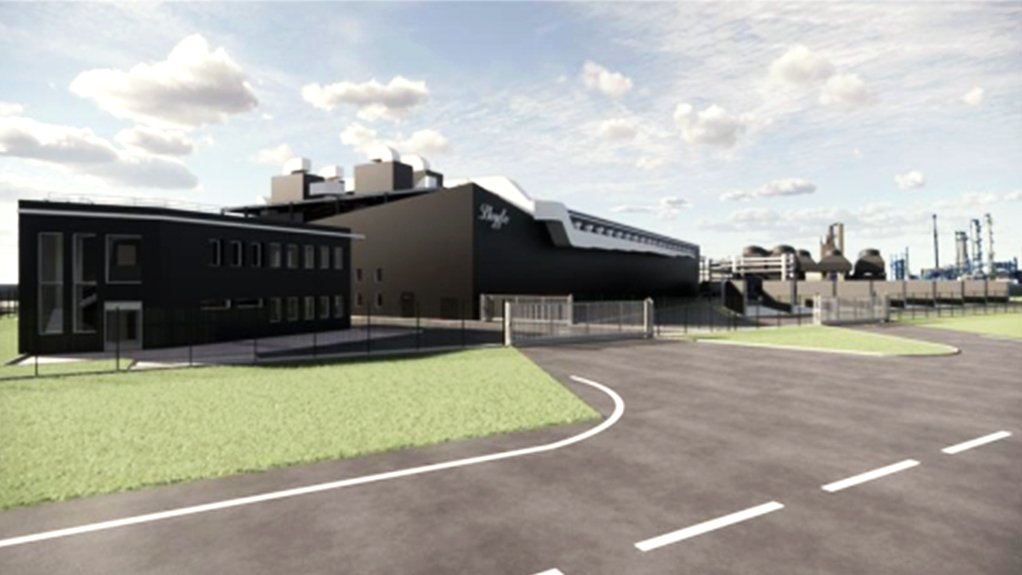
Lhyfe founder and CEO Matthieu Guesné.
Photo by Creamer Media
Lhyfe founder and CEO Matthieu Guesné.
A Lhyfe green hydrogen production site.
JOHANNESBURG (miningweekly.com) – It's important to understand that the market for green hydrogen is already there because the world is consuming 100-million tons of hydrogen a year that are “polluting like hell”, the French company Lhyfe emphasised this week as it drew attention to the steps it is taking to convert grey hydrogen to green hydrogen – and the use of proton exchange membrane (PEM) technology to do so also got a word in edgeways, which is music to South Africa’s ears as PEM and platinum group metals (PGMs) go hand-in-glove.
Lhyfe, a France-based public company, sells its green hydrogen at a price comparable with fossil fuels across Europe, which annually consumes seven-million tonnes of grey hydrogen, a major CO2 emitter.
At question time, the production of 2% of the world’s grey hydrogen by South Africa's synfuels and chemicals company was also brought into the picture.
“There's nothing that’s easier to do when decarbonising a customer, a plant, an industrial player, than switching from grey hydrogen to green hydrogen, so that's what we’re doing,” Lhyfe founder and CEO Matthieu Guesné explained during the online presentation covered by Mining Weekly.
“Decarbonising existing industry is as important as decarbonising mobility because 23% of CO2 emissions are linked to energy usage by industry, so it’s important to understand that the market for green hydrogen is already there,” Guesné pointed out.
The 100-million tons of grey hydrogen emits a billion tons of CO2.
“Whether you believe that green hydrogen is the silver bullet of energy transition or not, hydrogen is a necessity, and it has a tremendous market, and it needs to decaronise. Green hydrogen is 20 to 35 times less intensive in terms of CO2 emissions, so that's a good solution.
“It’s as important to decarbonise industry as it is to decarbonise mobility, because 23% of the CO2 emissions that are linked to energy usage in the world are linked to industry, and the same percentage, 23%, is linked to energy usage for transportation, so it’s the same challenge to decarbonise transportation as it is to decarbonise industry,” Guesné noted.
A lot of hydrogen is needed because of its use in the production of glues, inks, paints, fertilisers, explosives, and many other items.
“If you go to IKEA and you buy a shelf, 60% of the shelf is made from glue and particle wood that is glued. That glue is made from methanol, which is in turn made from carbon and hydrogen.
“Basically, with six chemical compounds, the chemical industry can produce everything, so you have soda, chlorine, nitrogen, carbon, and hydrogen, and those chemical compounds form the basic elements for doing plastics, glue, inks, paints, explosives, and fertilisers, all produced from those basic compounds, and that's why you need a lot of hydrogen,” Guesné reiterated.
Displayed on the screen was a Lhyfe hydrogen production plant that purifies seawater ahead of electrolysing it into green hydrogen. Shown was how this plant is connected to a wind farm that has wind turbines dedicated to hydrogen production.
Lhyfe’s commercial-scale plant has made more than 500 deliveries of green hydrogen to 50 customers, using a fleet of nearly 70 containers. The company employs 200 people and operates in 12 countries across Europe and Canada.
“We did a lot of hardware and software to achieve that. But we did not manufacture the components themselves. We bought the components from companies in Europe to do our plant.
“We did the funding and construction of the plants. We use our money, or bank money, to fund the plant, and we operate the plant. We have our own training centres for our own operators, and then we deliver to customers.
“We have a sales force that sells each and every kilogram of green hydrogen that we produce. The plant is running and it's delivering its hydrogen to customers via road transportation. We arrange everything. We start from the green electricity, and turn that green electricity into green hydrogen, and we sell all these.
“We don't produce any CO2 while running the plants. Greenhouse gasses are only emitted when we construct the plant, so, we have really strong decarbonisation power and our CO2 footprint is less than a kilogram of CO2 per kilogram of hydrogen that is produced, compared with 20 kilograms to 30 kilograms of CO2 per kilogram of grey hydrogen. We’re growing rapidly in terms of customers, plants and funding capacity,” added Guesné.
Also being decarbonised are forklifts, cars, trucks, and buses.
WHY HYDROGEN IS USED TO FUEL ROCKETS
Far-reaching advances taking place by fuel cell electric vehicle (FCEV) manufacturers across a broad front were also spelt out. Once again, important for South Africa is that PGMs go hand-in-glove with FCEVs.
In displaying a Hyundai NEXO FCEV, Guesné took the opportunity to highlight that hydrogen energy offers three times the efficiency of diesel energy, in addition to low sound and zero emission.
Pointing to the orange bottles on the NEXO under-carriage that store the green hydrogen, he said: “You can shoot those reservoirs with a Kalashnikov and they won’t leak. A tank filled costs €80 at the current price, which is why we’re having so much success.
“The engines are becoming increasingly compact and cheaper in the way batteries did but 15 years behind batteries.
“So, there's no way anyone can compare batteries to FCEVs, because there's 15 years of delay between the two technologies.
“But the hydrogen has a lot more energy than any battery will have per unit of mass. With a kilogram of battery, you will have 300 watt hours in the future. It doesn't have this today, and a kilogram of hydrogen has 39 000 watt hours, which is why it's the fuel of rockets.
“There's no stuff in the universe that has a denser energy per kilogram than hydrogen. That's why it has a bright future. The questions are around the markets in which it will take off, and about market depth. But today in France, Hyundai has regional trucks and there’s a taxi fleet. They have a business case. They are making profit today, with the current cost of green hydrogen today, at today’s costs, not in the future.
“In the Toyota car, the green hydrogen reservoirs are arranged a bit differently. BMW will release its X5 in 2028 and has a test fleet that’s already operating, as we speak.
“You have Stellantis, one of the largest van producers, that has green hydrogen vans running, and again, different arrangements. But they are selling the vans as we speak.
“Honda, with its SUV in the US, is probably one of the top three or four best fuel cells they have in terms of technology, again a different arrangement, but it's an existing car that’s being sold.
“Iveco has a truck running, and we are supplying hydrogen to Iveco, and the full truck production will be there in a couple of years.
“You have Mercedes, the Daimler group, that will supply buses to the city of Le Mans in France and that we will be supplying with hydrogen. Mercedes also has plans for trucks in joint venture with Volvo. That truck is being tested with Amazon, for example, and you have Swedish company Scania that is also now tendering for fuel cells technology.
“And there's a lot of competition from South Korea, Japan and China as well. The Chinese government has been really transparent about its strategy and aligning the consumption by purchasing trucks, cars, buses, putting in place refuelling stations and the production of green hydrogen.
“The same person who aligned battery production with consumption in China at gigafactory level, is delivering the same for hydrogen. Shanghai has been chosen as a test bed and as the development market for hydrogen trucks, cars, buses, refuelling stations and hydrogen production.
“Today, 90% to 95% of the buses and hydrogen trucks of the world are running in China. Half of the green production of the electrolyser production is now done in China. China did a leapfrog for batteries and the country is doing the same for hydrogen,” Guesné outlined.
Article Enquiry
Email Article
Save Article
Feedback
To advertise email advertising@creamermedia.co.za or click here
Announcements
What's On
Subscribe to improve your user experience...
Option 1 (equivalent of R125 a month):
Receive a weekly copy of Creamer Media's Engineering News & Mining Weekly magazine
(print copy for those in South Africa and e-magazine for those outside of South Africa)
Receive daily email newsletters
Access to full search results
Access archive of magazine back copies
Access to Projects in Progress
Access to ONE Research Report of your choice in PDF format
Option 2 (equivalent of R375 a month):
All benefits from Option 1
PLUS
Access to Creamer Media's Research Channel Africa for ALL Research Reports, in PDF format, on various industrial and mining sectors
including Electricity; Water; Energy Transition; Hydrogen; Roads, Rail and Ports; Coal; Gold; Platinum; Battery Metals; etc.
Already a subscriber?
Forgotten your password?
Receive weekly copy of Creamer Media's Engineering News & Mining Weekly magazine (print copy for those in South Africa and e-magazine for those outside of South Africa)
➕
Recieve daily email newsletters
➕
Access to full search results
➕
Access archive of magazine back copies
➕
Access to Projects in Progress
➕
Access to ONE Research Report of your choice in PDF format
RESEARCH CHANNEL AFRICA
R4500 (equivalent of R375 a month)
SUBSCRIBEAll benefits from Option 1
➕
Access to Creamer Media's Research Channel Africa for ALL Research Reports on various industrial and mining sectors, in PDF format, including on:
Electricity
➕
Water
➕
Energy Transition
➕
Hydrogen
➕
Roads, Rail and Ports
➕
Coal
➕
Gold
➕
Platinum
➕
Battery Metals
➕
etc.
Receive all benefits from Option 1 or Option 2 delivered to numerous people at your company
➕
Multiple User names and Passwords for simultaneous log-ins
➕
Intranet integration access to all in your organisation










